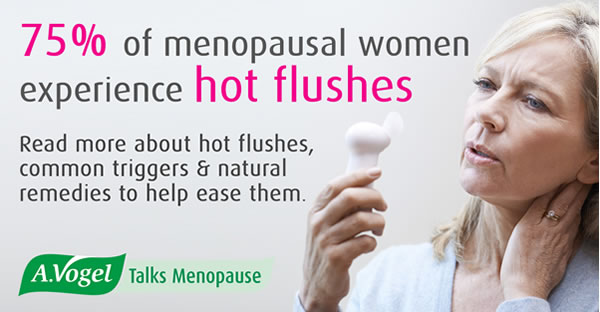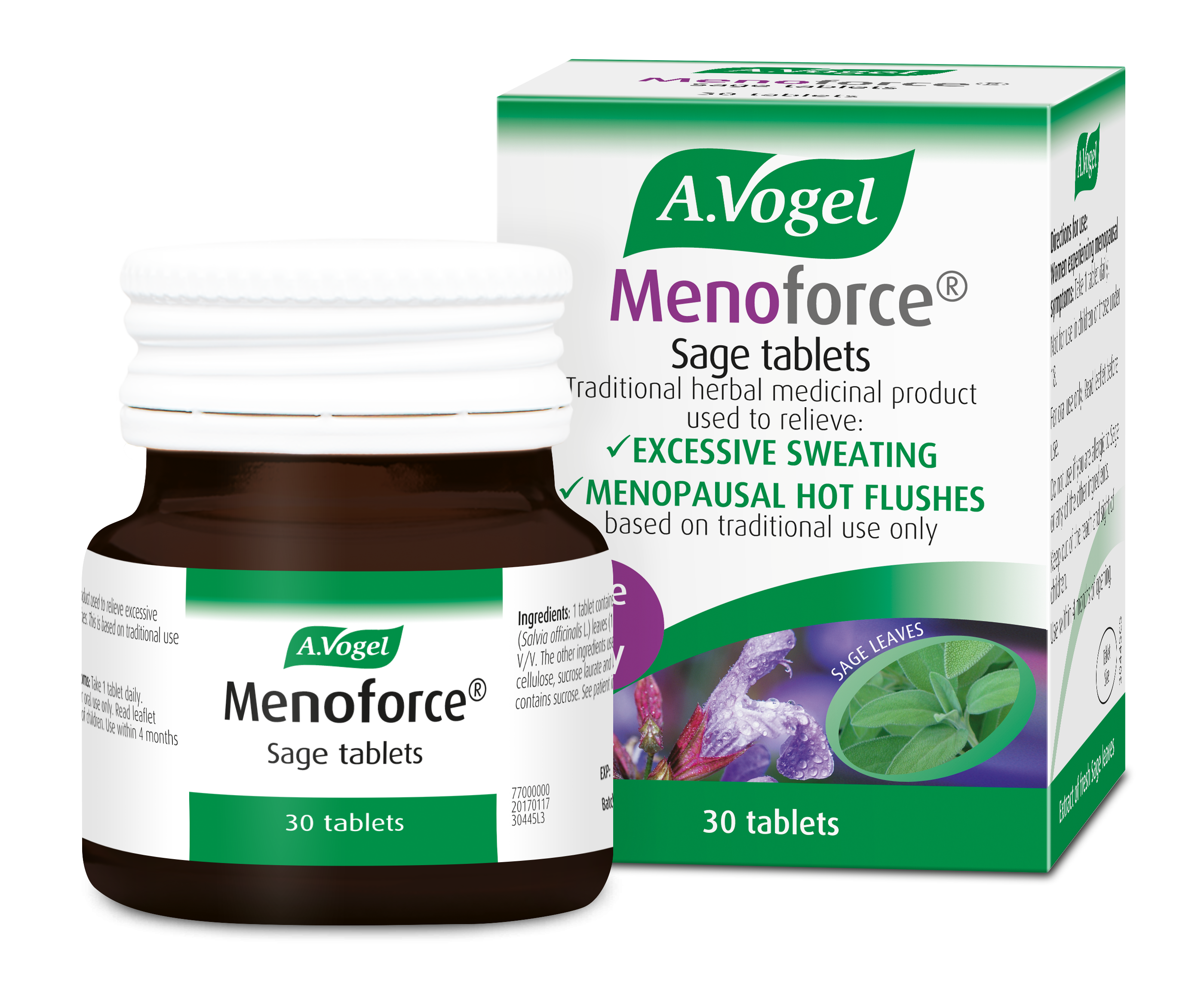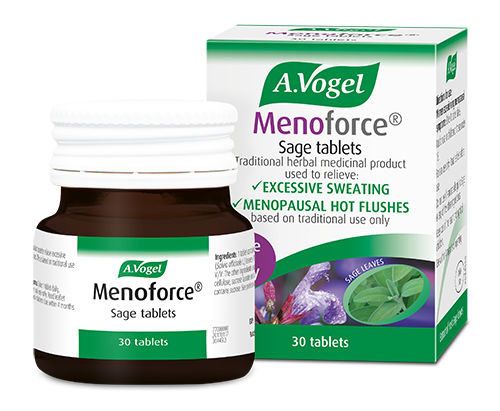Eileen talks about: Hot flushes
What are hot flushes?
Hot flushes are a common symptom of the menopause experienced by 75% of menopausal women and can be described as a sudden feeling of warmth or heat in the body. Hot flushes may occur on their own but are often accompanied by night sweats or excessive sweating during the day.

Hot flushes and sweats can also be accompanied by feelings of nausea, dizziness or a general feeling of being unwell.
There are other causes of hot flushes apart from the menopause. For example, men may sometimes experience the symptom but in general, when the term 'hot flush' is used, it refers to symptoms experienced by women going through the menopause.
Hot flushes. Hot flashes. What is the difference?
The term 'hot flushes' is used in the UK by women going through the menopause. In the USA, the term 'menopausal hot flashes' is used, together with the slightly different spelling of ‘estrogen’. Both mean exactly the same thing - the most common symptom experienced by women during the menopause.
Menopause hot flushes & sweats
Hot flushes during menopause may be felt all over the body but most commonly affect only the face and neck on the upper body. Flushes make women feel 'hot' with reddening of the skin as a result of changed in blood flow beneath the surface of the skin. Hot flushes often accompany, or contribute as one of the causes of sweating during the menopause.
As hot flushes and sweating during the menopause are such prominent symptoms, frequently occuring together, many women going through the menopause use the terms 'hot flushes' and 'menopausal sweats' interchangeably.
What can I expect?
Hot flushes associated with the menopause can occur at any time. Some women experience these as the main symptom of menopause. Others sail through the menopause without problems, experiencing hot flushes at the time of their last period. For a few, symptoms can continue for years beyond the end of menstruation.
Experience however does show that a quick transition from regular, normal periods to no periods can be one of the causes of hot flushes becoming more prominent.
Menopause hot flushes and sweats can happen at any time of the day (often at the most inconvenient or worst possible moment). They can occur as often as several times an hour - not good for that silk blouse.
The number of episodes experienced each day by an average woman varies greatly. Each hot flush can last a few seconds or up to several minutes. Unsurprisingly, the severity and frequency of your symptoms can easily influence other symptoms such as mental health, or sexual health.
Why do they occur?
The root cause of hot flushes is not clear. What is known is that the part of the brain that senses and controls body temperature (and other body functions) is the hypothalamus.
During the menopause, oestrogen levels fall and this can give rise to many menopausal symptoms. Although not fully understood, scientists think that this fall in oestrogen causes a glitch in the way the hypothalamus senses body temperature, making it think that you are too hot.
This causes a response designed to cool the body down. More blood goes to the skin (one of the causes of hot flushes and reddening of the skin) and sweat glands start working (the menopausal sweat). Estrogen levels, therefore, are thought to have a big part to play, but there can be other influences too, as we'll go on to discover.
Menopause hot flushes and the environment
One of the causes of hot flushes during the menopause is known to be changes in the external environment. For example, moving between indoors and outdoors with big differences in temperature.
This is the reason women find that symptoms can be more common in the summer, or when entering a well-heated room during cold weather. Other triggers or causes of menopause hot flushes include stress, anxiety, heightened emotions and even eating spicy foods which could all give rise to more severe hot flashes.
Hot flushes pose no real medical danger. However, when occurring at night and accompanied by night sweats, they can disturb your sleep and that of your partner. This in turn, can cause you to feel moody, affect concentration and energy levels.
Other reasons for getting hot flushes
Although the cause of hot flushes is usually put down to the menopause, other online resources such as the Mayo Clinic, The North American Menopause Society or the Australasian Menopause Society, also touch on other reasons why you might experience this symptom. These can include:
Obesity
Dietary problems
Hyperthyroidism
Anxiety
Medications
Heart problems
Fever
Tuberculosis
The indirect effects of other menopausal symptoms such as vaginal atrophy
Some cancers including breast cancer or prostate cancer in men
As above, hot flushes can also be experienced by men who are obviously not going through the same menopause stages as women. If you are suffering from hot flushes and do not feel that the menopause is the cause of these symptoms, you should speak to your doctor for advice. The same applies if you think your symptoms could be a side effect of any medications such as hormone therapy (including vaginal oestrogen) or even some non-hormonal medication.
Treatment of menopausal hot flushes
Extracts of sage herb, such as Menoforce® Sage tablets, have become one of the most popular menopause dietary supplements treatments, gaining a reputation as a simple way of helping deal with vasomotor symptoms such as hot flushes, night sweat and excessive sweating during the menopause.
A.Vogel Menoforce Sage Tablets for Menopausal Hot Flushes and Night Sweats, One-a-Day, 30 tablets
£15.99 (30 tablets) In Stock Get it tomorrow, 30th December.
Lifestyle changes
Alfred Vogel said that 'Good health is about more than taking remedies'. If you are going through perimenopause or menopause, there are a number of steps you can take to help yourself.
As menopause symptoms can be so wide ranging, the best way to prepare yourself for 'the change' is to look at all aspects of your life:
- If you smoke, reduce the number of cigarettes you have each day or even better, stop smoking. Cigarettes are associated with a higher risk of experiencing hot flushes and it has been shown that the more you smoke, the worse your flushes get
- Eat a well balanced, wholesome diet and don't miss meals - low blood sugar levels can be one of the causes of hot flushes!
- Ensure that you have regular bowel movements (at least one a day) - constipation can be a major factor in triggering hot flushes!
- Drink plenty of plain water - at least a litre and a half. This will help to hydrate you and alleviate hot flushes.
- Take regular exercise - a brisk half hour walk a day can work wonders!
- Deal with stress. Stress causes the release of chemicals that promote hot flushes! Stress can also be a factor in hot flushes in postmenopausal women - this is amongst one of our most common menopause faqs.
Reference:
Schwingl PJ. Obstet Gynecol 1994;84:29-34
First published on 20/6/13, updated on 20/2/24









